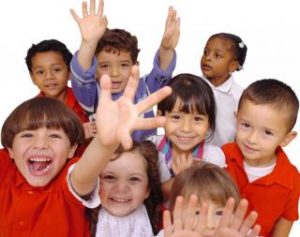Children and PTSD
When we talk about trauma and PTSD, we often talk about adults. Today, I'm starting a two-part series that focuses on children. How kids experience, process and integrate trauma happens very differently from adults for obvious reasons.
Recently, I interviewed an expert on the topic of children and PTSD, my colleague Bill Krill. He's the author of "Gentling: A Practical Guide to Treating PTSD in Abused Children". Below, I summarize the gist of our discussion and his insights.
This week, we'll outline what trauma is for children. Because trauma treatment needs to be tailored to the individual and because treatments that work for adults don't necessarily work for children, next week's post will outline how to approach treating PTSD in kids.
How To Identify Possible Childhood PTSD
Defining the age category of ‘child’
 When we talk about children and PTSD, we're generally speaking about anyone under the age of thirteen. An important note:Trauma can cause stunted emotional development at the age of the traumatic experience. So, a child can be twelve but emotionally stuck at the age of four if that's when the trauma occurred.
When we talk about children and PTSD, we're generally speaking about anyone under the age of thirteen. An important note:Trauma can cause stunted emotional development at the age of the traumatic experience. So, a child can be twelve but emotionally stuck at the age of four if that's when the trauma occurred.
Types of Situations Induce PTSD in Children
The causes of PTSD in adults also apply to children. Additionally, research suggests that PTSD can result from domestic abuse situations where children witness their mother (or other close relative) suffering violence.
When PTSD Usually Emerges in Children
Like adult post-trauma reaction, PTSD symptoms may appear immediately after the Acute Stress phase completes, or later after another triggering event or experience. Note: many of the signs of PTSD in children can look like a different issues. Common misdiagnoses include ADHD, ODD and bipolar disorder. Many PTSD victims (and this includes children) hide symptoms and do not disclose the fact of the trauma. This means a child could go struggle with symptoms for several years before PTSD is diagnosed.
Symptoms of PTSD in a Child
PTSD in children expresses differently than in adults:
- Rapid mood changes from calm and happy to enormously agitated; the agitation may end as quickly as it began, plus a child won't be able to explain what it was about.
- Regressions in speech
- Uncontrollable crying
- Facial and chest flushing
- Body tenseness
- Pacing or looking panicked
- Pupil dilation
- Refusal to be comforted or touched
- Tantrums
Read part two about children and PTSD treatment here.
Michele is the author of Your Life After Trauma: Powerful Practices to Reclaim Your Identity. Connect with her on Google+, LinkedIn, Facebook, Twitter and her website, HealMyPTSD.com.
APA Reference
Rosenthal, M.
(2013, May 8). Children and PTSD, HealthyPlace. Retrieved
on 2026, January 14 from https://www.healthyplace.com/blogs/traumaptsdblog/2013/05/children-and-ptsd-part-1
Author: Michele Rosenthal
Everyone looks for a label today, a way to justify behavior that's not always understood. I think more children are being misdiagnosed with ADHD. Thank you for posting this article, it's opened my eyes to other possibilities.
@Rose -- I completely agree: Many children are being misdiagnosed with ADHD, and also Bi-Polar. The same happens for adults. We all need to be aware of, as you put it, other possibilities. And we need to question labels and diagnoses to make sure they're accurate!